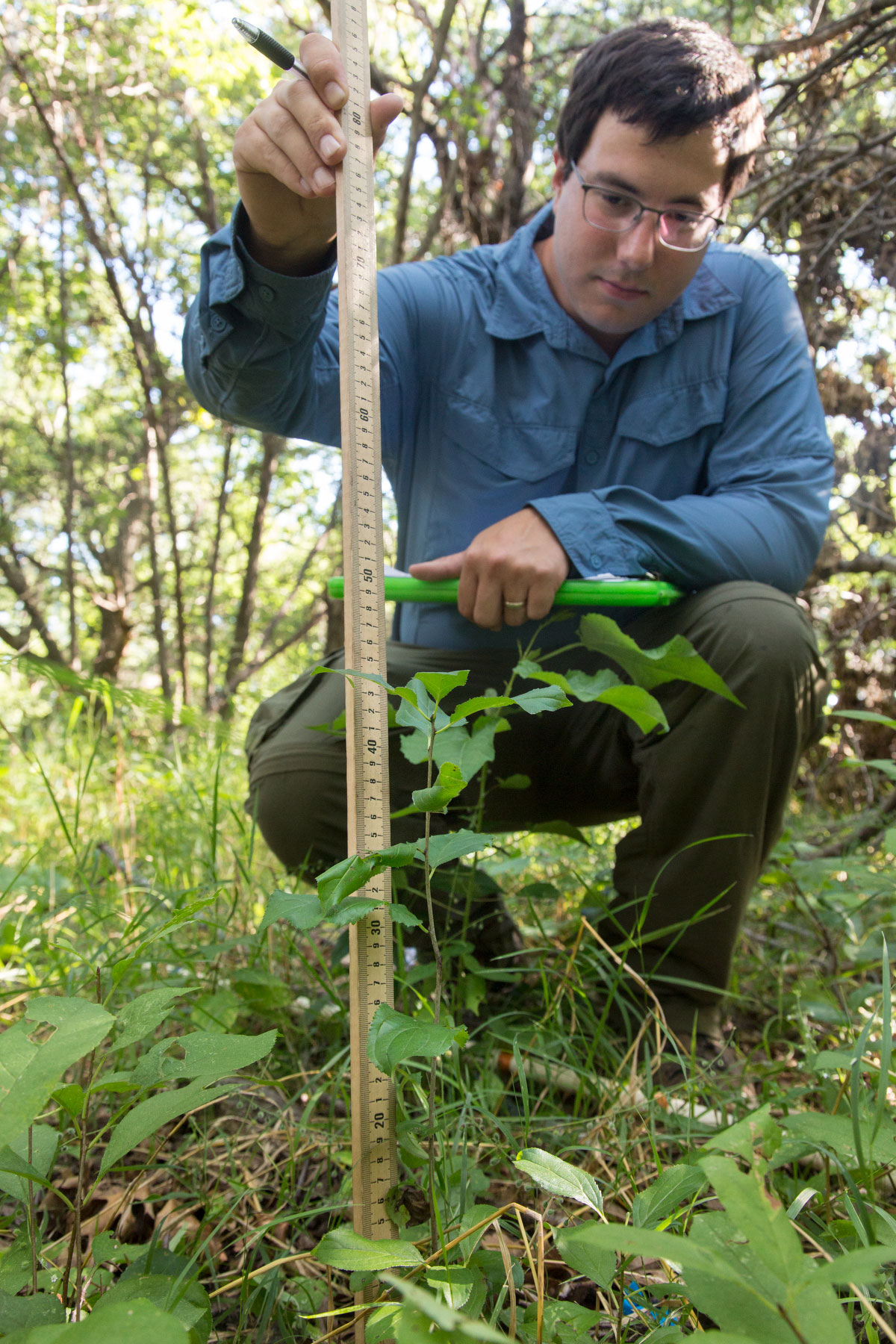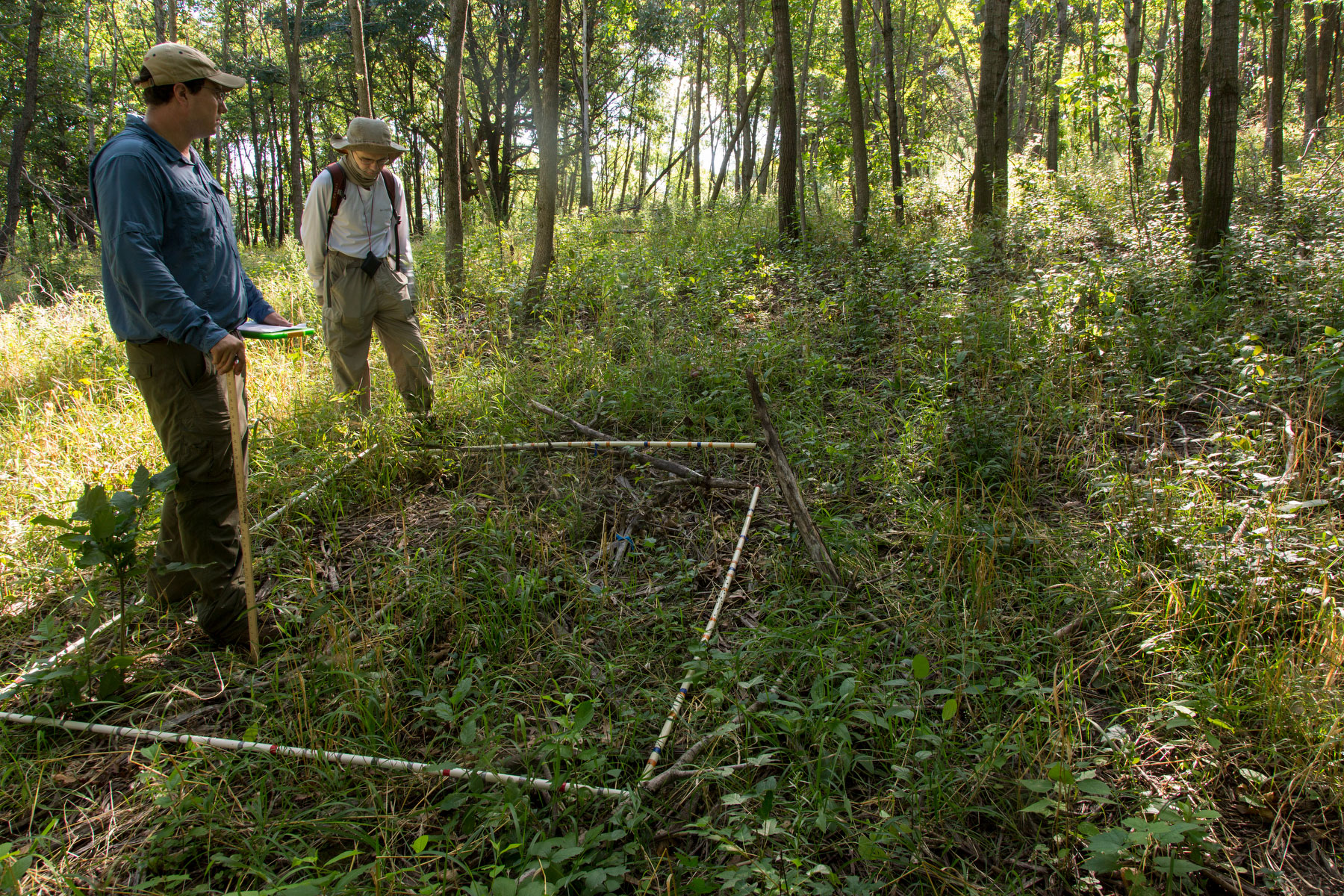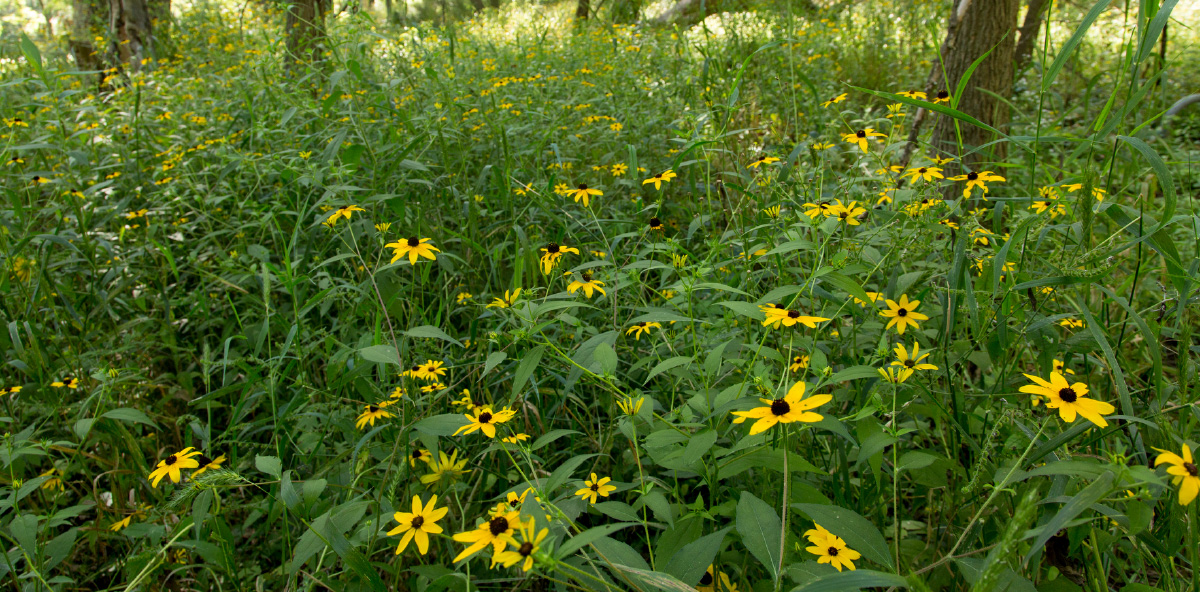August 16, 2019
by Maggie Nesbit
Buckthorn affects countless acres and wallets in Minnesota. Those who attempt to remove the invasive shrub without a post-management strategy often see it return to the same spot a few years after removal. This continuous cycle poses both economic and environmental threats.
Mike Schuster is a University of Minnesota postdoctoral associate looking to solve these issues. He is part of an MITPPC-funded project called “Cover It Up!.” Fellow team members include principal investigators Peter Reich and Lee Frelich and postdoctoral associate Peter Wragg, all of the Department of Forest Resources. Together, they hope to improve forest health by using dense native plant cover to shade out buckthorn after removal.

Postdoctoral researcher Mike Schuster measures the height of a seedling in the field.
Breaking the cycle
For years, managing buckthorn has meant major time, money, effort and chemical controls. "Cover it Up!" aims to change that dynamic.
“If we increase the health of forests and reduce time and labor expenditures, we also reduce the side effects of those management activities, including herbicide and pesticide application,” said Schuster. “If we are able to break this cycle of invasion –removal, invasion, removal, invasion– we stand to gain a lot.”
“If we are able to break this cycle of invasion – removal, invasion, removal, invasion – we stand to gain a lot.”
Some of the concepts behind Cover It Up! originated with Alex Roth, who received his Ph.D. from the University of Minnesota while studying with Reich and Frelich (he now works with Friends of the Mississippi River). Namely, he wondered if revegetation techniques could be applied to increase biotic resistance – the ability of a system to repel invaders through competition.
Roth's inspiration came from a restoration technique in grasslands, where it is common to use revegetation strategies after invasive species management to prevent reinvasion.
In the past, managers have seeded forests with native plants mainly to increase biodiversity or wildlife habitat, or for erosion control. Schuster said there is no report of using revegetation to manage buckthorn in particular.
“Our results so far suggest that revegetation is at least capable of suppressing buckthorn– the question right now is how we can scale it up and under what conditions we can apply it,” said Schuster.
Throwing shade
Revegetation and seeding has worked well in grasslands because there is plenty of light and water to go around. In forests, light is not always available under the tree canopy. To succeed at buckthorn control in forest environments, Schuster and his colleagues need native species that can grow quickly even in low light conditions.
“Getting the density of cover that we need over the time period that we need is a challenge. We need to look closely at the conditions under which this [strategy] can work and also look at alternative species compositions for different types of sites,” said Schuster.
Data from Schuster and his team suggest that shrubs in particular do very well at suppressing buckthorn and might be a more appropriate vegetation type than herbaceous species in particularly dark sites, such as densely covered forests.

Postdoctoral researchers Mike Schuster (left) and Peter Wragg (right) examine a buckthorn research plot.

The Cover it Up! team seeds with species including native wildflowers and grasses after buckthorn removal to prevent reinvasion and restore ecosystem health.
Calling on citizen scientists
A new MITPPC grant will allow the team to expand their revegetation study for environments all across Minnesota. They will continue to explore how seeding interacts with other forest management efforts, like controlled burns or the allowance or exclusion of deer. This will also look at whether seeding shrubs is a viable strategy for establishing sufficient shrub cover.
As a part of this second phase, Lori Knosalla – the project’s citizen science program coordinator – has taken action by promoting the involvement of those with buckthorn on their properties in Minnesota. Citizen science refers to research completed by members of the general public, often in collaboration with or under the direction of professional scientists and scientific institutions. In this project, a network of citizen scientists will help carry out experiments in woodland areas across the state.
“It's a good project for people to come together.”
“It’s a good project for people to come together,” Knosalla said.
So far, Knosalla reports that the opportunity has attracted many property-owners with buckthorn on their land, but she hopes to see a wide range of participant backgrounds – from soybean growers to school classes.

Close-up of glossy buckthorn, Frangula alnus (Photo credit: Caro Silvola)

About the Author
Maggie Nesbit is a Communications Intern with the Minnesota Invasive Terrestrial Plants and Pests Center (MITPPC). She is a double major in English and Strategic Communications at the University of Minnesota. In her spare time, Maggie enjoys running, hiking, reading and spending time with friends and family. Maggie's position is funded by a grant from the Minnesota Soybean Research & Promotion Council.